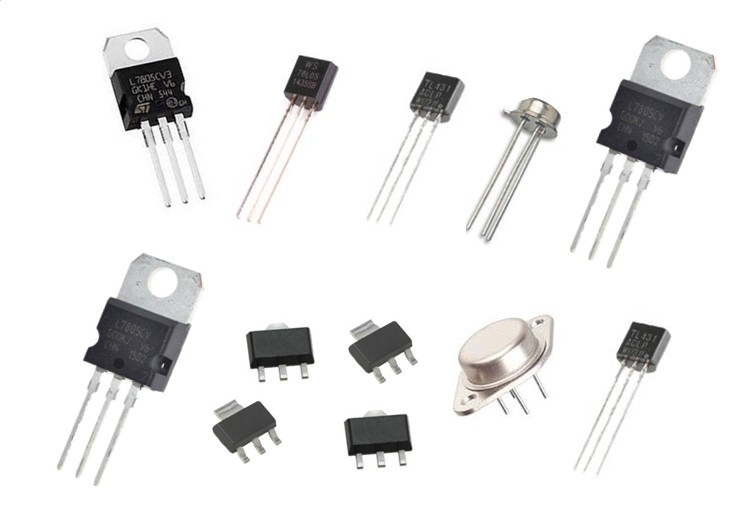What is a Voltage Regulator?
A voltage regulator serves as a crucial component in electrical systems, ensuring a stable and consistent voltage output despite fluctuations in input voltage or load variations. Its primary function is to regulate the voltage supplied to electrical devices, preventing damage from overvoltage and ensuring reliable operation under varying conditions.

How do I Know if my Voltage Regulator is Bad?
Several symptoms may indicate a faulty voltage regulator, including erratic electrical behavior, dimming or flickering lights, and difficulty starting the vehicle or equipment. Additionally, if the battery consistently fails to hold a charge or if the electrical system experiences unexplained failures, the voltage regulator may be at fault. Regular inspection and testing by a qualified technician can help diagnose and address potential issues with the voltage regulator. Helpful resource: https://www.carparts.com/blog/bad-voltage-regulator-symptoms-testing-replacement-cost-more/#:~:text=The%20voltage%20regulator%20controls%20the,of%20a%20bad%20voltage%20regulator.
Do You Need a Voltage Regulator?
In many electrical systems, especially those with alternators as the primary power source, a voltage regulator is essential for maintaining a stable voltage output. Without a voltage regulator, electrical devices may be subjected to fluctuating voltages, leading to premature failure or damage. Whether in automotive, industrial, or residential applications, voltage regulators play a vital role in ensuring the integrity and longevity of electrical equipment. Helpful resource: https://predictabledesigns.com/how-to-pick-the-right-voltage-regulators-for-your-design/#:~:text=Probably%20more%20than%2090%25%20of,a%20voltage%20regulator%20is%20required.
What are the Three Basic Types of Voltage Regulators?
Voltage regulators can be categorized into three primary types based on their operating principles: linear regulators, switching regulators, and shunt regulators. Linear regulators regulate voltage by dissipating excess energy as heat, making them simple and cost-effective but less efficient for high-power applications. Switching regulators employ a switching mechanism to regulate voltage efficiently, suitable for applications requiring high efficiency and minimal heat dissipation. Shunt regulators maintain a constant output voltage by diverting excess current away from the load, offering precise regulation and low output impedance. Helpful resource: https://www.elprocus.com/types-of-voltage-regulators-and-working-principle/#:~:text=There%20are%20three%20types%20of,down%2C%20and%20Inverter%20voltage%20regulators.
Is a Voltage Regulator the Same as an Alternator?
Although both voltage regulators and alternators play integral roles in regulating electrical systems' voltage output, they are distinct components with different functions. An alternator generates electrical power by converting mechanical energy into electrical energy, typically using electromagnetic induction. In contrast, a voltage regulator regulates the output voltage generated by the alternator, ensuring that it remains within safe operating limits and meets the electrical system's requirements. Helpful resource: https://www.autonationmobileservice.com/blog/car-voltage-regulator/#:~:text=As%20its%20name%20suggests%2C%20your,electrical%20systems%20in%20your%20vehicle.
Can You Replace a Voltage Regulator Without Replacing the Alternator?
In many cases, it is possible to replace a faulty voltage regulator without replacing the entire alternator assembly. Modern alternators often feature removable voltage regulator modules, allowing for straightforward replacement without extensive disassembly. However, if the alternator exhibits additional issues or has reached the end of its service life, replacing the entire unit may be more practical to ensure long-term reliability and performance. Helpful resource: https://www.quora.com/Should-you-replace-a-car-alternator-if-only-the-voltage-regulator-is-bad#:~:text=In%20most%20cases%20yes%20and,done%20without%20removing%20the%20alternator.
In conclusion, voltage regulators stand as indispensable guardians of electrical stability, ensuring that electrical systems operate reliably and safely under varying conditions. Understanding their function, types, and significance in electrical systems empowers users to diagnose, maintain, and optimize voltage regulation for diverse applications. Whether in automotive, industrial, or residential settings, voltage regulators play a vital role in preserving the integrity and longevity of electrical equipment.
Facts Checked by Hugh Johnson
Hugh Johnson stands tall in the realms of both the chip industry and the electronic parts industry, earning acclaim as an esteemed expert in these fields. With an extensive background steeped in semiconductor technology, Hugh's expertise transcends chip design and fabrication, encompassing a profound understanding of electronic components' intricate functionalities and applications. His seasoned knowledge spans diverse facets, from microchip architecture and fabrication techniques to the broader landscape of electronic parts utilized across industries.









